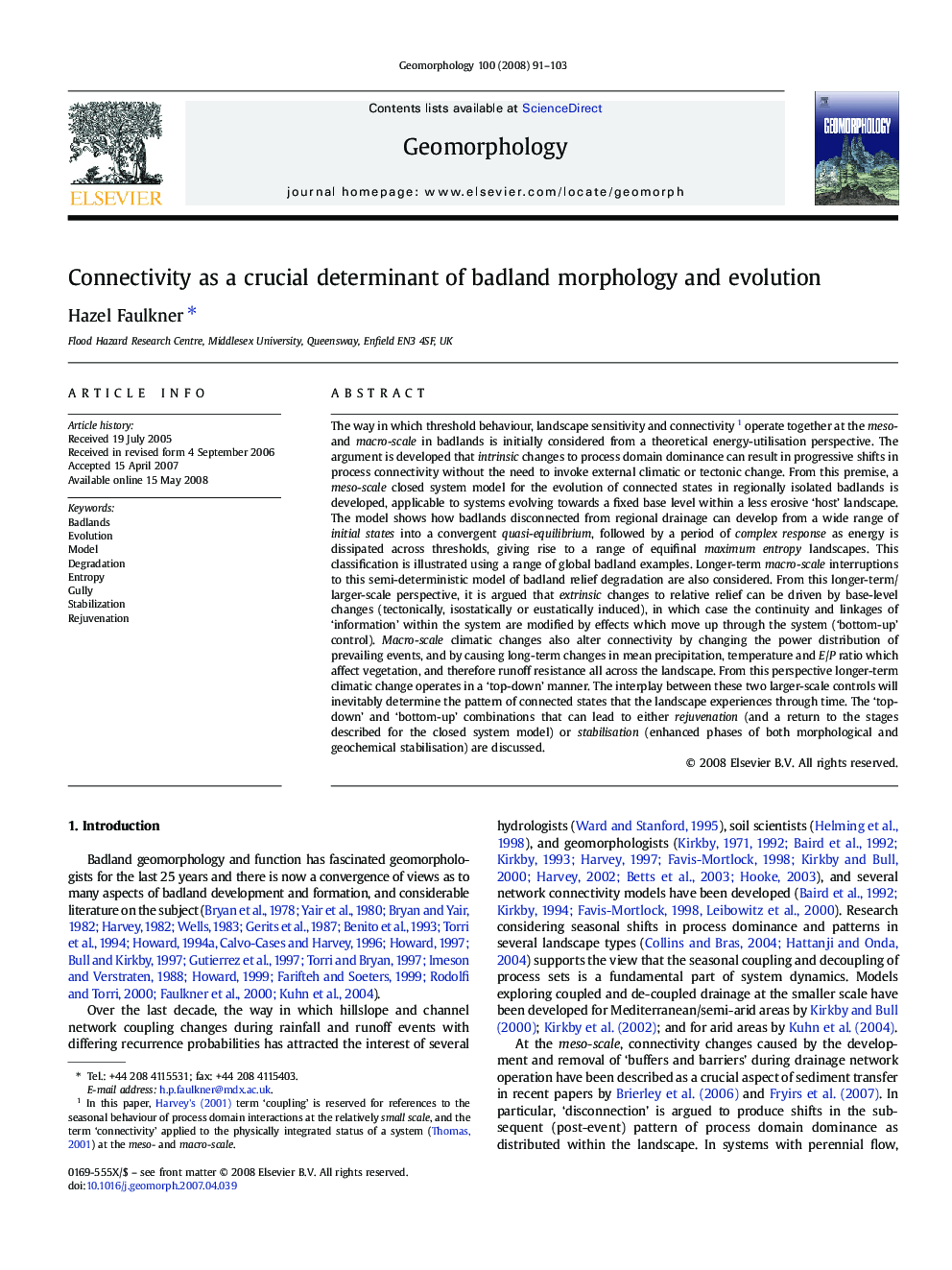| کد مقاله | کد نشریه | سال انتشار | مقاله انگلیسی | نسخه تمام متن |
|---|---|---|---|---|
| 4686672 | 1635554 | 2008 | 13 صفحه PDF | دانلود رایگان |

The way in which threshold behaviour, landscape sensitivity and connectivity1 operate together at the meso- and macro-scale in badlands is initially considered from a theoretical energy-utilisation perspective. The argument is developed that intrinsic changes to process domain dominance can result in progressive shifts in process connectivity without the need to invoke external climatic or tectonic change. From this premise, a meso-scale closed system model for the evolution of connected states in regionally isolated badlands is developed, applicable to systems evolving towards a fixed base level within a less erosive ‘host’ landscape. The model shows how badlands disconnected from regional drainage can develop from a wide range of initial states into a convergent quasi-equilibrium, followed by a period of complex response as energy is dissipated across thresholds, giving rise to a range of equifinal maximum entropy landscapes. This classification is illustrated using a range of global badland examples. Longer-term macro-scale interruptions to this semi-deterministic model of badland relief degradation are also considered. From this longer-term/larger-scale perspective, it is argued that extrinsic changes to relative relief can be driven by base-level changes (tectonically, isostatically or eustatically induced), in which case the continuity and linkages of ‘information’ within the system are modified by effects which move up through the system (‘bottom-up’ control). Macro-scale climatic changes also alter connectivity by changing the power distribution of prevailing events, and by causing long-term changes in mean precipitation, temperature and E/P ratio which affect vegetation, and therefore runoff resistance all across the landscape. From this perspective longer-term climatic change operates in a ‘top-down’ manner. The interplay between these two larger-scale controls will inevitably determine the pattern of connected states that the landscape experiences through time. The ‘top-down’ and ‘bottom-up’ combinations that can lead to either rejuvenation (and a return to the stages described for the closed system model) or stabilisation (enhanced phases of both morphological and geochemical stabilisation) are discussed.
Journal: Geomorphology - Volume 100, Issues 1–2, 1 August 2008, Pages 91–103